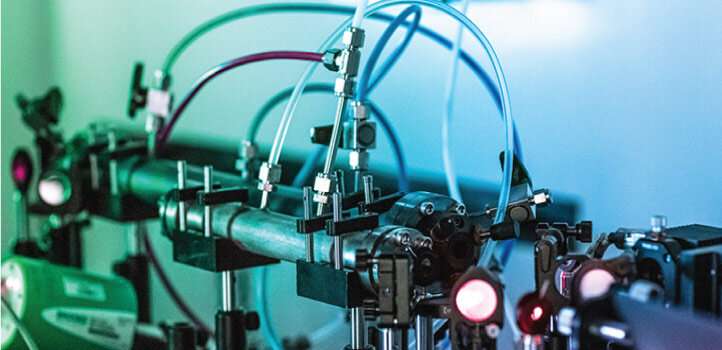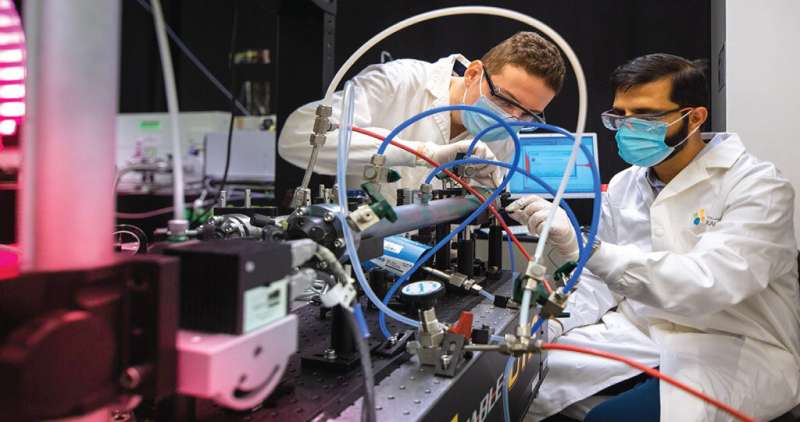Better benzene sensing at laser point

A laser-based sensor developed at KAUST could improve monitoring of benzene emissions and limit exposure to this pollutant. In collaboration with Saudi Aramco, KAUST researchers have developed a device that accurately senses extremely low concentrations of benzene in real time.
Benzene can cause serious health conditions, including cancer and the blood-related disease aplastic anemia. This harmful volatile compound, which originates from natural sources and human activities, mainly exists in industrial settings ranging from crude oil and petrochemical processing facilities to service stations, putting the health of workers at risk. It is also present in vehicle exhaust, biomass-based heating fuels and some consumer products, which can lead to dangerous exposure.
Typical approaches designed to control benzene emissions rely on gas chromatography and mass spectrometry but demand stringent maintenance schedules, complex sampling protocols and time-consuming measurements. Commercially available sensors present interference problems from other ambient air components and detection limits exceeding 100 parts per billion, failing to meet the recommended thresholds.
Now, a team led by Aamir Farooq—in a project funded by Saudi Aramco's Environmental Protection Department—has developed a compact laser-based sensor that exhibits high selectivity and sensitivity to benzene with a detection limit of two parts per billion, outperforming existing devices. Robust enough for field applications, the sensor performs measurements in seconds without preliminary calibration.

To achieve this unprecedented sensitivity, the researchers designed a sensor with walls that comprise two parallel concave mirrors that face each other to form a cavity around the sample. The cavity traps the laser beam, which keeps reflecting back and forth between the mirrors. "In this way, it travels a dramatically larger distance through the sample than the inter-mirror separation," explains Ph.D. student Mhanna Mhanna, who performed the experiments. "It enables us to detect concentrations that are three orders of magnitude lower than in a conventional sensor," he adds.
Farooq's team optimized the light absorption of benzene by selecting the laser wavelength and mathematically eliminating any interference from methane, ethylene and water vapor. This provided accurate benzene concentrations in the presence of interfering components.
The sensor detected trace benzene in real samples collected from various locations. For example, the sensor detected higher benzene concentrations in parking garage on weekdays than on weekends, consistent with traffic conditions. Service stations showed the highest levels, but these amounts were well below recommended thresholds.
"The sensor could be attached to a drone or carried by hand to scan target areas daily for benzene emissions," Mhanna says. The team is also looking into ways to make the sensor more portable.
More information: Mhanna Mhanna et al. Cavity-Enhanced Measurements of Benzene for Environmental Monitoring, IEEE Sensors Journal (2020). DOI: 10.1109/JSEN.2020.3026981




















